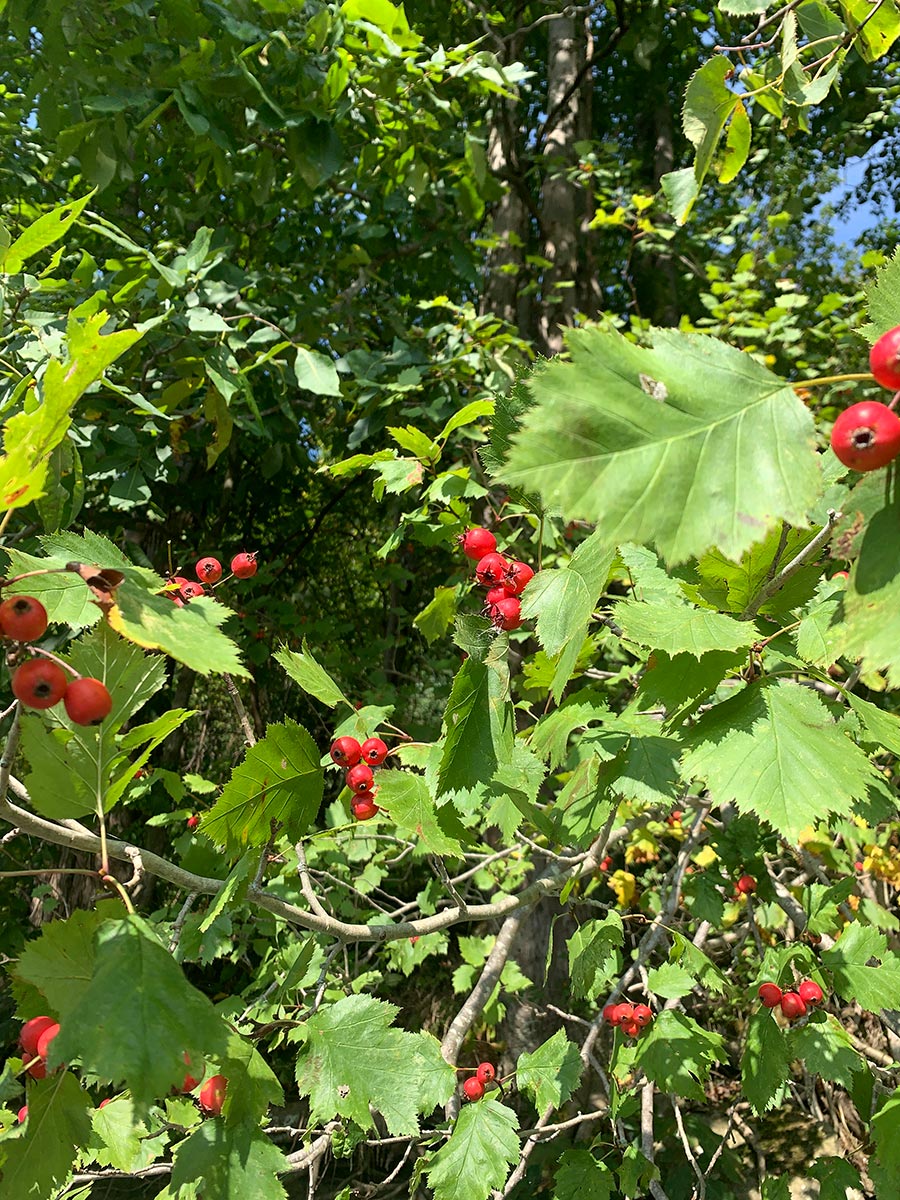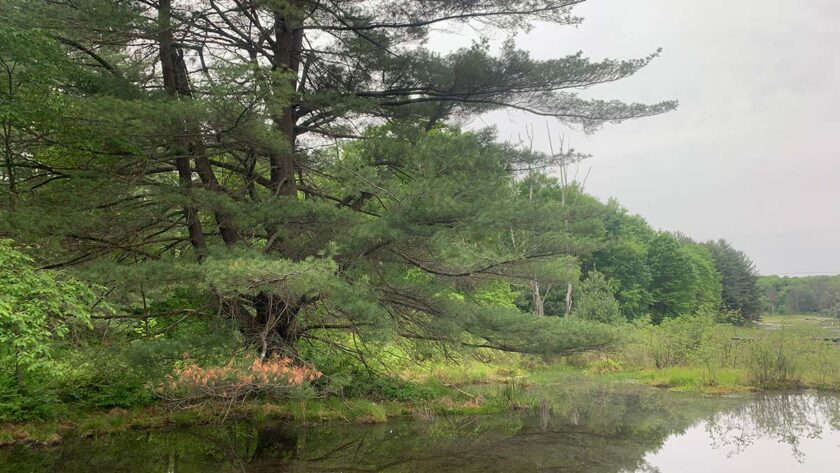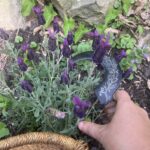I don’t know about you, but 2020 has been a hell of a year. Usually, the Fall Equinox and the coming of the dark half of the year is a time for celebration, as Fall is my favorite season. But this year, the idea of moving into the dark half of the year when so much has already been dark is hard. We have so much loss, death, employment insecurity, health insecurity, food insecurity, sickness, political unrest….the list goes on and on. Here in the US in particular, things are really difficult and many are dealing with basic issues to security, including financial security, food security, health security, and obviously, a lot of isolation. So, given these challenges, I think its important to fall back on our spiritual practices for nurturing, support, and grounding and embrace what the season offers. The Fall Equinox, as a time of balance, can help us bring those energies into our lives. The light and dark are balanced, reminding us to work to balance those energies in our own lives. So in the rest of this post, I offer some ideas for those who are solitary this season for potential practices, particularly surrounding rest and balance.
Contemplating Darkness and Embracing Rest
The fall equinox is a time when, for the briefest moment, we have balance. The balance between the light in the world and the darkness, when we stand equally within the dark and the light. I love the Fall Equinox because, like the Spring Equinox, it is a gateway. In this case, in the Northern Hemisphere, we are walking through the gateway from the light half of the year, from the time of planting into growth, into a time of harvest and then, of rest. Darkness isn’t a bad thing, its just different than the high light of summer (I wrote about some of these differences a few years ago and how to embrace the darkness as it comes). I also think its important to realize that nature’s darkness is a different kind of darkness than we might be facing culturally. Nature’s darkness is a time of rest, of rejuvenation, and of completeness.
At the same time, it’s also important to note that the darkness is hard for many: the energizing quality of the sun as it wanes can be difficult. Many people suffer from seasonal affective disorder, and the thought of going into the winter months with the cold and dark can be difficult.
Given all of this, I think that’s one of the things to focus on during this season in particular: rest and slowing down. If we consider traditional agricultural calendars and holidays (which much of the druid’s wheel of the year is based on), the Fall Equinox helps us continue the harvest season (which begins at Lughnasadh and ends at Samhain) and moves us into the season of quietude. As a homesteader and sacred gardener living in Western PA, we have four seasons, and the late fall and winter really do provide a time of rest. It is dark early, the animals hunker down, the perennial plants go into their hibernation, the woodland creatures hibernate, and the annuals drop their seeds. Our garden is tended and put to bed. Our garden, which is always a source of labor and joy, goes into slumber. And then, we can all rest for a bit before the season picks back up in the spring.
An Outdoor Rest Ritual

On the theme of rest, you can do a simple rest ritual for your fall equinox celebration. The first is a rest ritual. Its pretty simple: take a blanket and go into the woods or a wild place of your choice. I like to be near running water for this. Open up a sacred grove or circle in your tradition and then place your blanket in the middle of the space. Lay down on the blanket. First focus on physical relaxation and deep breathing: starting at your feet, work to tense, and then relax each part of your body, working your way up to your head. As you do this, attend to your breath, coming into a quiet breath meditation. After this, just rest. Work on the absence of activity, of thought, and simply be at peace. Doing this, even for 10 or 15 minutes, can really help you slow down and relax. If being absolutely still doesn’t work, try just observing the natural world around you and give your conscious mind something to focus on. When you are done, thank the spirits of place, and close out the space.
I do want to stress that you can do this ritual indoors (and I’ve done so with good effect) but I’ve also found that it is much more effective if you do it outside somewhere if at all possible. Laying on the ground allows you to really soak in the telluric energy from nature and that has a nurturing quality to the body, mind, and soul.
Druid Retreat
Playing on the theme of rest, I have long advocated for druid retreats (of any duration–from a few hours to a few days) as a spiritual practice, and these are something that I really think can benefit us in these challenging times, particularly in the spiritual preparation of heading into the dark half of the year among so much cultural darkness. This is an excellent time for one–the Fall Equinox is still usually pretty warm out and you can go camping, rent a cabin, or even just retreat into nature for a few hours. I have written extensively on how to take a longer druid retreat (Part I and Part II) for more details on a longer retreat.
Even if you can’t do a longer retreat, consider a shorter retreat of a few hours. The most important thing here is that you set your intentions and just go and be. Spend time with yourself, looking inward, and working on the things you can control (we can always do self-work, even when the world is spiraling out of control around us!)
One of the things I did recently in this theme was doing an overnight kayak trip, a retreat from the difficulty of everyday life. My sister and I went overnight on the Allegheny river, taking our trip the weekend before the fall equinox. Packing minimal gear, we camped on one of the public wilderness islands in the Allegheny that are open for primitive camping. My favorite part of this trip was sitting in the brisk morning watching the sunrise over the water. It was really nice just to disconnect for two days and spend time with water, wildlife, sun, and good company.

Resiliency was a key theme for me as we were on our retreat–it was helpful to meditate on the theme of resiliency, what it means to me, what qualities that I have that can make me more resilient, and how I can move forward despite some extremely challenging circumstances at present.
Gratitude Practice and Ritual
I think because of these challenging times, we are all tending to focus on what we are missing or how things are hard or scary, not what we still have or are grateful for. One of the things I’ve been doing throughout this challenging time is to ramp up my gratitude practices. I want everyone and everything in my life to understand how much I value them. Gratitude practices can be as simple as taking the time to thank those in your life (human and non-human alike). Offering practices, shrines, and other nature-honoring practices (see link above) can also be a fantastic way to offer thanks.
One of the things you might try is committing at the Fall Equinox to a daily gratitude practice and bringing gratitude more into your central awareness. Here’s what I suggest: in a ritual space, begin by focusing your meditations on the idea of gratitude. What is it to you? How does it manifest? How does it make you feel when someone is grateful for you? What does it make you feel when you express gratitude to others? Once you’ve done this, write down everything you are grateful for in a list. Now take that list and divide it into days between the Fall Equinox and Samhain (about 6 weeks) and divide up your list across those six weeks. Each day or every few days, you will have something or someone on your list to express gratitude for. Make this a part of your life for the next six weeks and see what happens.
Spiritual Tools and Healing Herbs

A final tool I want to mention the theme of rest and rejuvenation is to seek out herbal healing allies during this time. Here in our ecosystem, we have a number of plants that are ready to harvest at the fall equinox: Goldenrod (anti-histamine and anti-inflammatory), New England Aster (lung support), Hawthorn (for the heart and emotional heart), joe pye weed (for supporting the kidneys and gallbladder), and so much more. Learning about one or more plants in your ecosystem, how to make sacred medicine from them, and harvesting them is a wonderful practice. I’ve written extensively about this, so check out any of these posts: Sacred medicine making at Lughnasa, A druid’s guide to herbalism part I & part II, preparing flower essences, how to learn more about herbalism. One of the things that I especially like to do this time of year is to create smoke cleansing sticks for spiritual purposes–smoke cleansing traditions appear in many traditional cultures and certainly have a role in many modern druid practices. I have offered instructions on my blog for the basics as well as extensive lists of plants you can use if you live in an ecosystem similar to what I have here in Western PA!
One practice I can suggest is thinking about one thing that plants could help you with in the coming dark half of the year (if you need suggestions about plants or ideas, post in the comments and I’m happy to help!) Create yourself some sacred plant medicines and spiritual tools with the intent of using them to assist you with these challenging times and the coming dark half of the year. Here are a few ideas:
- Working on emotional healing and resiliency – Hawthorn tincture or glycerate
- Focusing on grounding – acorn infused oil
- Working on clarity of thought – ginko leaf and/or lavender tincture
- Clearing away dark energy or thoughts – cedar and sage smoke stick
You get the idea! The list I offered above are spiritual tools you can craft and use for these challenging times.
Conclusion
I hope this post has found its way to you in a time when you needed it and that you have a blessed Fall Equinox. I’d love to hear other ideas for what you are doing this particular fall equinox to strengthen and prepare for the dark half of the year.




Reblogged this on Paths I Walk.
You mention, “Open up a sacred grove or circle in your tradition”. Can you explain some of the ways this can be done? I am just starting on my journey!
Hi Jerilyn, absolutely! I haven’t gotten around to writing an introduction to this yet, but there are many ways that you do it.
The philosophy behind it is at least twofold: one, that you are intentionally setting aside sacred space, which helps you get more deeply into a connected place for ritual. But the second comes from occult philosophy–when we do magic or ritual, we can attract unwanted energies, and opening up a sacred space is a way of protecting you and the work you are doing from such undue influences.
In the druid tradition, we often use the term “opening up a sacred grove” and call peace in the quarters, call to the four elements, and then put up either a circle or a sphere around us (envisioning it). Here’s one such approach I wrote about using a tarot deck for this purpose: https://druidgarden.wordpress.com/2019/09/22/using-an-oracle-or-tarot-deck-to-establish-sacred-space/
Here are AODA’s grove opening and closing, which is what I use 90% of the time since I’m a long-term member of AODA: http://aoda.org/publications/articles-on-druidry/aodas-solitary-grove-opening-and-closing/
Please feel free to ask more questions. You might also want to check out http://www.aoda.org for more on a possible druid order that can teach you a lot!
Reblogged this on Blue Dragon Journal.
Thanks Dana.
How would you use the Acorn infused oil? Topically?
Also the Gingko and Lavender, I think
those are edible, right?
Yep, you could use it topically as an annointing oil, for example. Ginko and lavender are both edible, yes. Lavender can be baked into cookies or made into tea. I’ve primarily used gingko as a tincture for memory support :). Blessings!
This explains my concerns of going into fall here in the Midwest absolutely perfectly. I have found my deck garden and walks in Nature not only soothing and healing, but pretty much keeping me sane early on in the lockdown. And now I do not want to let that go. As you say, winter is already isolating, especially for single folks. And while much is less stressful for some of us in some ways, much is as bad or worse in other ones. Any loss is harder now, and over time, some ongoing concerns mount up. Thank you so much for this point of view and these ideas. But also for speaking my feelings in a way I had not articulated them myself.
Hi Mary–so glad you found this post helpful and inspiring. I had to really sit with it and do some deep meditation to think about the challenges here. I’m glad to say that last weekend was probably one of the most effective rituals and relaxing times, so at least, the practices worked for me :).
This was a very thought provoking piece. Thank you.
Thank you so much, Michael, and thank you for reading :).
Thank you so much for this post. Lovely!
You are most welcome! I’m glad you found it helpful. Thank you for reading and commenting.
Hi Dana,
Thank you for sharing your insight, it is so rich and always makes sense to me emotionally and spiritually and mentally. I really appreciate you taking the time to write these posts. I don’t read much of my bulk email, but I always read your posts. They are a treat with a cup of tea, a hug from a kindred spirit.
Thank you, thank you! Jenn Hayden
________________________________
Hi Jenn,
Aww, thank you so much for your kind words. I write what comes to me, and write what spirit suggests. I’m glad you found this post so helpful :). Blessings!
Reblogged this on Forever Unlimited and commented:
Rest eludes many of us, but time out, resting in nature is perhaps the most healing -inaction- we can (not) do!
Thank you for sharing and the reblog! 🙂
I started incorporating gratitude practice as part of my daily meditation a few months back and it has really helped improve my mindset and stress level. There are constants, like gratitude for my spiritual practice and always being able to mindfully return to my breath, but also new things each day, some big, some small.
YES. Gratitude practices are really helping me too. It helps me focus on what I have, what I am grateful for, and the good things in life. I can honor the oak dropping its many acorns, and somehow, it gives me peace. There’s also interesting psychological research on gratitude as a way to ward off depression and fear (which we all certainly have enough of in 2020!). I’m glad these are helpful to you!
How I’ve been dealing with the shorter days is waking up before sunrise. To me it’s easier to deal with the darkness if I see the sun rise and set.
Yes, I’ve been doing the same thing. Because the pandemic made my work schedule more flexible than usual, I actually never changed time when Pennsylvania shifted away from DST. So I used to go to bed at 10:30 and wake up at 7:30. Now I go to bed at 9:30 and wake up at 6:30 but it’s the exact same time as before. This allows me to get outside early, to watch the sunrise, and to get on with my day. It really does help! It also is good for our animals (we have a number of bird flocks) because they are able to be let out right at sunrise, giving them maximum outdoor time even in minimum light!